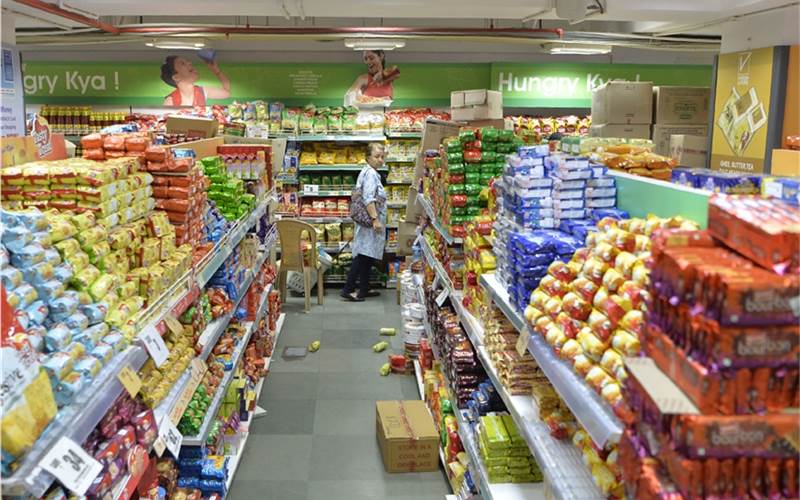India's top 100 brands for 2018
Consumer electronics and shopping brands dominate India's top 10, with other brand moves indicating Indians aren't prioritising health yet to the extent some headlines might suggest.
08 Aug 2018 | By PrintWeek India
This look at India's Top 100 brands is part of Campaign Asia-Pacific's Asia's Top 1000 Brands report. For more on India and the status of Indian brands according to our research, see the full Indian market report.
It’s no secret that Indians swear by Cricket and it’s often compared to a religion that binds the country together. But if you looked at the IPL as a brand, it shows that Cricket needs to put its head down and focus on the game.
At number 69 in the rankings of India’s top 100 brands, the Indian Premier League has been overtaken by the FIFA World Cup as a stronger brand. At number 64, the recently concluded soccer world cup scores a goal that many would not have envisaged could happen in India so soon. But Cricket can probably breathe easy as the next edition of the FIFA World Cup is only in 2022.
|
Rank
|
2017
|
2018
|
|
1
|
Samsung
|
Samsung
|
|
2
|
Nestle
|
Nestle
|
|
3
|
Sony
|
LG
|
|
4
|
Apple
|
Amul
|
|
5
|
Amul
|
Sony
|
|
6
|
LG
|
Apple
|
|
7
|
Big Bazaar
|
Google
|
|
8
|
Phillips
|
Big Bazar
|
|
9
|
Adidas
|
Philips
|
|
10
|
Apollo
|
Amazon
|
For some others, despite a difficult year, it was business as usual. Samsung’s phone mishaps and their subsequent product recall might have caused a reason for the Korean Chaebol to worry. But across Asia and in India, Samsung dominates the rankings as the brand continues to occupy pole position for the third consecutive year. But the real gainer in the top 10 was Samsung’s Korean ally, and close competitor, LG, that jumped three spots over the previous edition of this study to sit pretty on the third spot.
However, a marketing expert feels that while Samsung is on a strong wicket because of the wide range of products it has on offer, it has its work cut out in key categories like mobile phones – where the brand was under fire when its premium phone model had serious problems and had to be recalled. Also, competitors like Xiaomi, OnePlus and others have made serious inroads into what was considered an impregnable fortress.
Consumer electronics and durables dominated the conversation among the top 10 rankers in India with 5 out of the top 10 brands belonging to that space. The surprise package in this space has been Philips, the brand that was once synonymous with consumer electronics in India, is now relegated to niche space of lighting, male grooming, healthcare among others. However, the brand continues to hold its position in the top 10 for the second consecutive year. At number 9, Philips is one spot ahead of even Amazon. In 2016, Philips held the spot number 18, which now belongs to Japanese major Panasonic.
Given the Indian fetish for shopping and bargain hunting, retailer Big Bazaar and e-tailer Amazon feature in the top 10. However, internet video on demand services provider Amazon Prime Video lags behind at number 77. Surprise, surprise. Netflix does not make it to the top 100.
In the financial services sector, blame it on the rising NPAs or growing concern on governance in the banking sector, but the topmost financial services brand is not a bank, nor a mutual fund. Payment majors Visa and MasterCard come upfront at ranks 28 and 32 respectively. Indian bank brands saunter in later with SBI, the country’s largest bank comes in only at the 37th spot. ICICI Bank is even lower and occupies the 41st place.
The other thing that comes up as a surprise is that even as Indians, the younger set in particular, are getting more conscious about health, we are not going to give up our indulgent foods in a hurry. How else would one explain the fact that both Maggi and Coca-Cola are doing well in the study.
Both brands, which had to face a considerable amount of consumer ire when they fell foul with the government, allegedly over product quality issues, have shown a strong rebound. Does this show that the Indian consumer has given up on healthy eating? Well, the fact that cab aggregators like Ola and Uber come well ahead of sports shoe manufacturers only throws a strong indicator of where the preference lies.
This article was first published in Campaign India.












 See All
See All